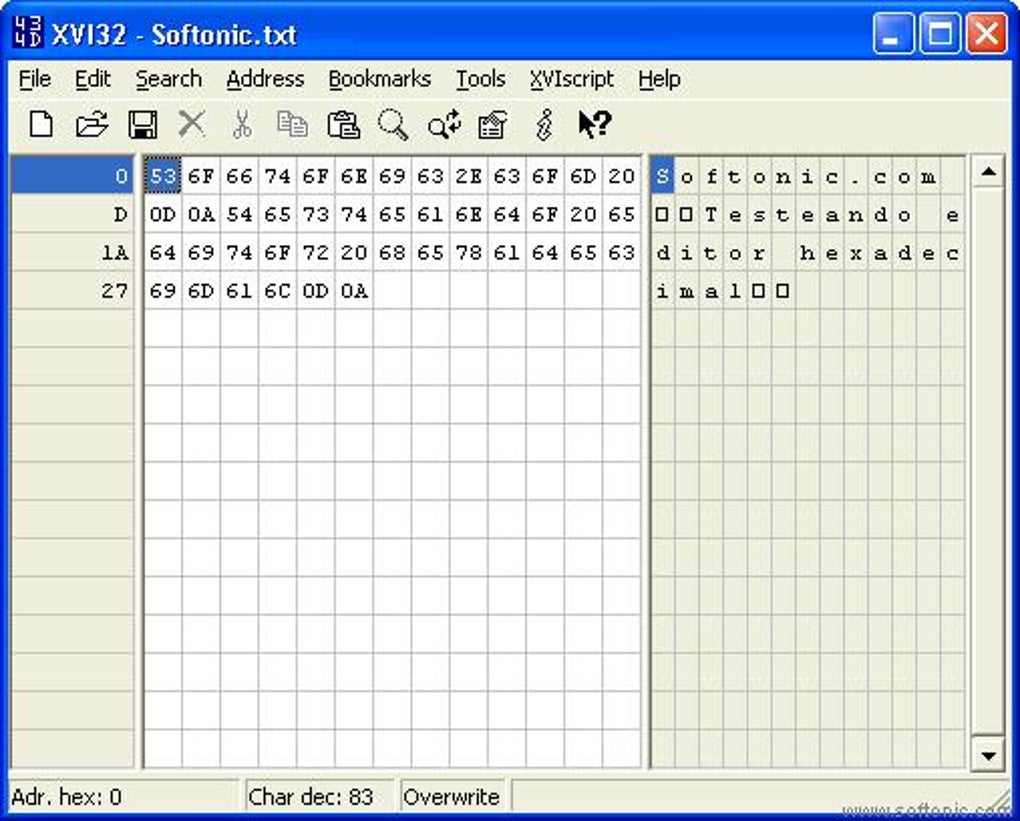

Rcode = cp210x->SetParity(CP210X_PARITY_NONE)


Supports all normal text editor keyboard shortcuts. Unlimited file size (limited by what the actual file system supports). These are the 10 decimal digits (0, 1, 2, 3, 4, 5, 6, 7, 8, 9) and the first six letters of the English alphabet (A, B, C, D, E, F). As a base-16 numeral system, it uses 16 symbols. If using legacy library open Max3421e_constants.h find "define MAX_SS 10 and change "10"Ĭlass CP210xAsync : public CP210xAsyncOper Before we can discuss memory, we must first learn hexadecimal counting. The hexadecimal system (shortly hex), uses the number 16 as its base (radix). It’s been tested on files as large as 118 GB.
#0xed in hex pro#
Pro Works with huge files Hex Fiend can handle as big a file as you’re able to create. You won’t dread launching or working with Hex Fiend even on low-RAM machines. and change to the corresponding pin#'s. 0圎D Pros Pro Small memory footprint Hex Fiend does not keep your files in memory. If need to change chip select pin CS/SS open library UsbCore.h find "typedef MAX3421e MAX3421E" IPAddress server(169, 254, 0, 2) //Server_PLC addressīool validateCheckSum(char *data, uint16_t dataLength, uint16_t checksum) ModbusTCPClient modbusTCPClient(ethClient) IPAddress ip(169, 254, 0, 4) //ECOM Arduino address Hex uses 16 digits including 0-9, just as the decimal system does, but also uses the letters A, B, C, D, E, and F (equivalent to a, b, c, d, e, f) to represent the numbers 10-15.
#0xed in hex code#
I am only concerned with the hex conversion currently and the code is planned to be further optimized. This code is written for an emission analyzer pulled in through an USB host shield and output through an ethernet shield minicking a PLC modbus register. This is the typical response output from the analyzer with 03xxxx as O2, 04xxx as CO, 05xxx as NO and so on. The conversion is erratic and no pattern. See also Binary Sequence Types bytes, bytearray, memoryviewand Bytearray Objects. Without an argument, an array of size 0 is created. Finally, since images are binary files, you may find it more useful (depending on your purpose) to examine them with a hex editor such as 0圎D or Hex Fiend. The timestamp, block reward, difficulty, gas used and the number of transactions in the block are detailed on Etherscan. I am using CO = strtol(COdata, NULL, 16) for the conversion. 0

 0 kommentar(er)
0 kommentar(er)
